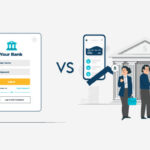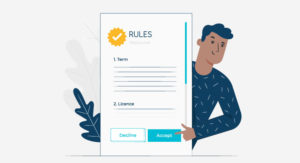Customer Verification: Why Do Online Businesses Need to Know Their Customers?

The online landscape is rapidly changing how businesses interact with their customers and vice-versa. Businesses have been realizing quickly how important digital methods of connectivity are. Digital space providers are ever-growing in industries like e-commerce, finance, and social media. Customer needs are evolving and they utilize the newfound convenience of digital methods like online shopping or online banking.
Before the pandemic, not a lot of businesses offered digital services, but the global pandemic shifted their interest toward setting up digital services. Proper customer verification can help reduce fraud and prevent young people from accessing age-sensitive products and services.
Businesses and online merchants have a number of options for addressing the issue to reduce risk, liability, and costs due to fraud and underage purchases.
What is Customer Verification?
Customer verification is a process that’s used by businesses with online products, services, or content to make sure the information provided by the customers is correct. Businesses offering online services also need to verify that the customers are really not using fraudulent documents as a part of identity theft.
A major benefit of customer verification is that it allows businesses to follow through with government laws and regulations. Moreover, customer verification processes help in reducing risks of fraud and costs incurred from fraud arising from incorrect information provided by customers.
At the same time, customer verification also protects users from fraudulent activities that are committed by other users. It also helps in keeping the business’s customer base secure from the risk of identity theft. The customer verification process also allows businesses to make sure that the customer doesn’t pose any risks to the business. Customer verification allows businesses with age-restricted products or services to make sure their customers are old enough for buying the products or services.
This part of customer verification saves businesses against fraud losses, but it also eliminates the costs of delivering products and services to the wrong address.
Customer verification also helps businesses to comply with KYC and AML regulations to avoid being fined by regulatory bodies.
Why Do Companies Use Customer Verification?
The customer verification process is crucial for businesses that offer online services. If a company doesn’t know who they are dealing with, they can sell products and services, or share confidential information with fraudsters. Doing business with unknown parties is a stepping stone to the risk of fraud.
Apart from monetary losses and expenses, potential liability to customers, or even regulatory fines, the damage to the reputation of the brand can be extreme. Companies operating in the finance and banking industry have switched to digital methods. With the right digital solutions, users can create a bank account, apply for loans and transfer funds online, and much more. Because of this, governments require banks to comply with strict regulations to prevent fraudsters from exploiting the weak points of online financial systems.
Banks and other financial institutions are legally obligated to follow through with the KYC guidelines. These guidelines ask businesses to collect vital information about their customers and verify if the information is correct. This prevents cases of identity theft and money laundering.
Businesses that sell online products and services are also required by regulatory bodies and governments to comply with a variety of verification processes. This helps in safeguarding customers from online fraudsters stealing their data and using it for identity theft.
Types of Customer Verification
Government bodies such as the United States and the European Union promote the usage of multi-factor authentication. There are a variety of customer verification methods that businesses use for the verification of customers.
- Multi-Factor Authentication
Multi-Factor Authentication identifies the identity of the person by using two or more factors regarding who the person is. These two factors are knowledge (something only a customer knows) and possession (something a user has).
Usually, a business with a chance of higher risks would want to use at least 2 factors to identify its customers. The businesses could ask the users to provide their email or mailing address and age and they’d receive a code while trying to log in to digital services.
Most customer verification applications only allow one method for customer verification. This allows low-risk businesses to verify their customers easily.
- Age Verification
Age verification helps businesses to verify a customer’s age before a shipment or a product is delivered to them. There are third-party solutions that utilize global databases to verify customer age.
- KnowKnowledge Based Authentication (KBA)
Knowledge-Based Authentication is a very old method of customer verification and it requires customers and users to submit vital information like their name, mailing address, home address, phone number, age, or email.
Then customers are asked certain questions that they have submitted during account creation for logging in. While KBA is a common method, it’s not the most sophisticated and fraud-proof solution.
- Online Document Verification
Online document verification is one of the most common methods of customer verification. Third-party solutions like DIRO’s online document verification technology help in verifying customers. The technology verifies online documents instantly and offers 100% proof of authentication for documents globally.
Conclusion: How to Verify a Customer Identity
Identity theft is one major problem faced by countless businesses and customers. This is why the need for strict KYC solutions is growing. To reduce online fraud, KYC compliance is needed to verify customer verification.












